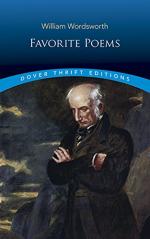
|
| Name: _________________________ | Period: ___________________ |
This test consists of 15 multiple choice questions and 5 short answer questions.
Multiple Choice Questions
1. What kind of image opens the poem?
(a) An auditory image of the water.
(b) A tactile image of the grass and tree bark.
(c) An olfactory image of smoke.
(d) A visual image of the mountains.
2. Besides in his heart and mind, where does the speaker say he felt "sensations sweet" when he remembered the landscape (28)?
(a) In his bones.
(b) In his stomach.
(c) In his blood.
(d) In his throat.
3. What sets line 22, "The Hermit sits alone," apart from the preceding 21 lines?
(a) Its tone.
(b) Its perspective.
(c) Its length.
(d) Its syntax.
4. What is the name of the river the speaker is near?
(a) The Thames.
(b) The Wye.
(c) The Dee.
(d) The Severn.
5. What modern description might we give of the state that the speaker describes toward the end of the second verse paragraph?
(a) Unconsciousness.
(b) Hallucination.
(c) Hypnotic trance.
(d) Meditation.
6. What are "copses" (line 14)?
(a) Shallow dips in the landscape.
(b) Spots of contrasting color.
(c) The decayed remains of buildings.
(d) Stands of trees and brush.
7. What does the speaker say is the best part of a good person's life?
(a) Gestures of love and respect from others.
(b) The positive memories created for others.
(c) Small acts of love and kindness performed for others.
(d) Helping others focus on the important aspects of life.
8. Which is the best definition of "sportive" in the context of line 16?
(a) Ungovernable, unmanageable.
(b) Of or related to sports.
(c) Carried away by playful emotion.
(d) Competitive to the point of aggression.
9. Lines 18 and 19, "Sent up, in silence, from among the trees!/ With some uncertain notice, as might seem," contain which two techniques?
(a) Anaphora, assonance.
(b) Litotes, anaphora.
(c) Sibilance, litotes.
(d) Assonance, sibilance.
10. What does the speaker mean when he says he was "'mid the din/ Of towns and cities" (lines 26-27)?
(a) In the city, he was surrounded by loud, unpleasant noise.
(b) In the city, he was often tired and hungry.
(c) In the city, he was surrounded by crowds and confusion.
(d) In the city, he was often forced to hurry and rush through things.
11. What is the best definition of "sublime" in the context of line 38?
(a) To purify or refine.
(b) Complete and total.
(c) Transcendent experience.
(d) Passing from one phase of matter into another.
12. How long has it been since the speaker was last in this place?
(a) Seven years.
(b) Four years.
(c) Six years.
(d) Five years.
13. Which is the most reasonable interpretation of the speaker's line 19 mention of "some uncertain notice"?
(a) The trees are unaware of the people beneath them.
(b) The trees obscure his vision.
(c) He is not sure whether he is imagining the smoke.
(d) The smoke's meaning is unclear.
14. What kind of tree does the speaker mention being under?
(a) Oak.
(b) Chestnut.
(c) Aspen.
(d) Sycamore.
15. What paradox does the speaker introduce at the end of the second verse paragraph?
(a) He can move more quickly without using his body.
(b) He can understand more thoroughly without using his mind.
(c) He can see more clearly without using his vision.
(d) He can exercise more discipline without using his will power.
Short Answer Questions
1. In line 26, how does the speaker characterize the rooms he has been in in the city?
2. What kind of building is an abbey?
3. The word "murmur" in line 4 is an example of which technique?
4. What kind of confusion does the speaker find himself able to shrug off when he remembers the landscape?
5. Who is the author of "Tintern Abbey"?
|
This section contains 594 words (approx. 2 pages at 300 words per page) |

|




